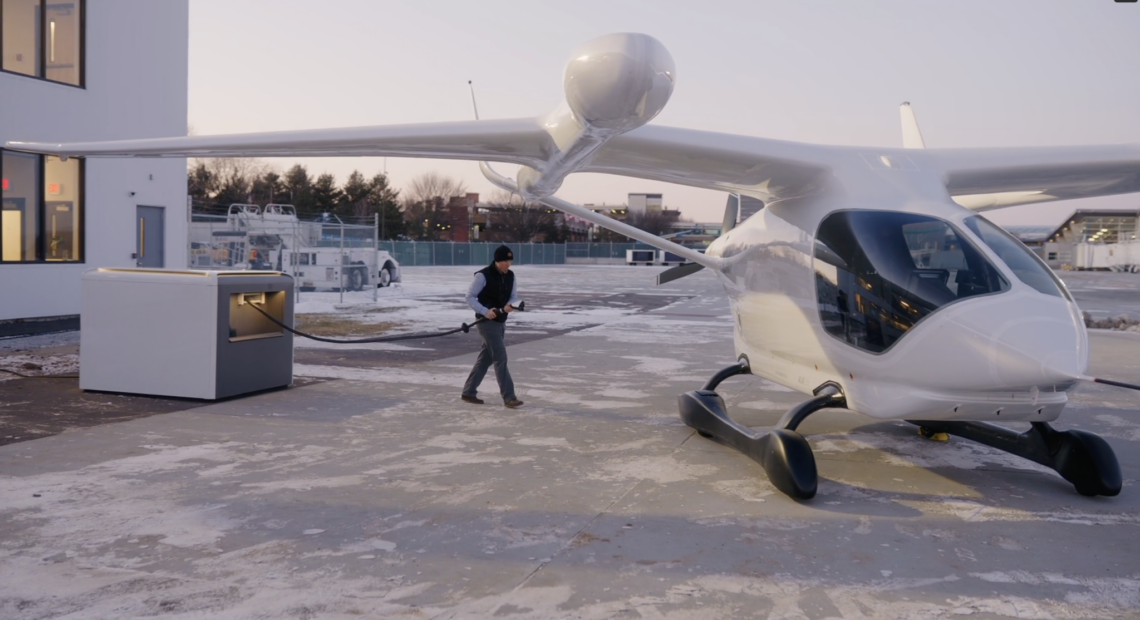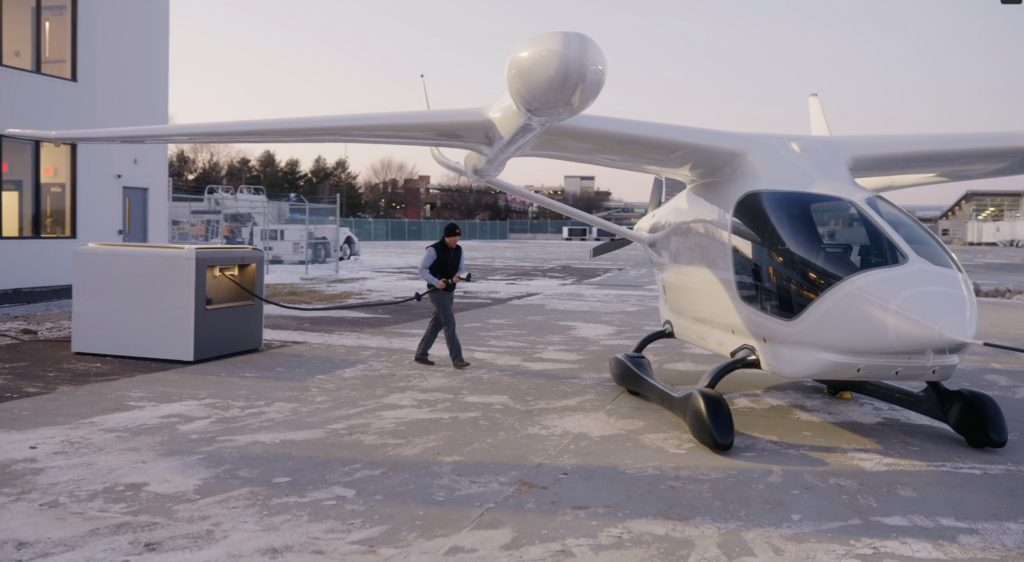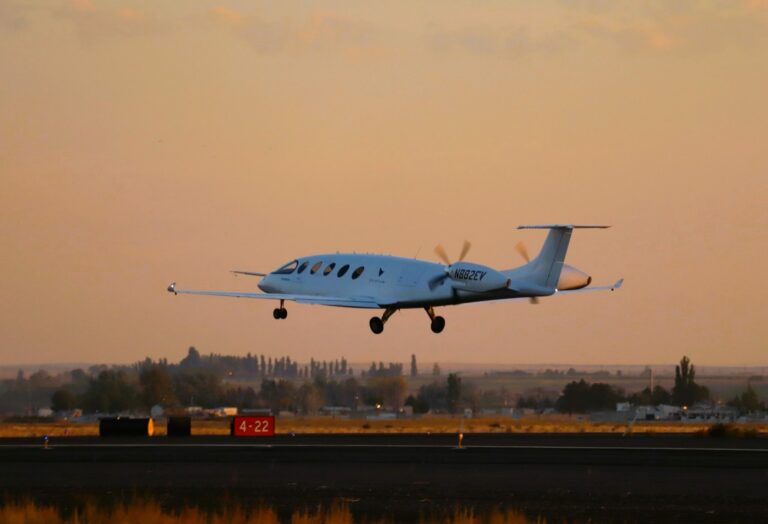
Six Washington airports want to charge ahead preparing for electric aircraft

By Tom Banse, Washington State Standard
The managers of half a dozen Washington airports see a future where you could hop across Puget Sound or the Cascade Mountains in minutes on a non-polluting electric commuter plane or air taxi. They want to be ready for that day by winning government funding to install pricey charging stations for battery-powered aircraft now.
A bunch of manufacturers have flown small prototypes of all-electric passenger aircraft, but none are certified for commercial service in North America. The electric aviation sector is still at a very early stage where many things are unclear, including key questions such as what charging standard to use and whether rechargeable batteries will even be broadly adopted for flight propulsion.
The six public airports that threw in together on a federal grant application for airside charging infrastructure are Chehalis-Centralia, Yakima, Friday Harbor, Port Angeles, Everett’s Paine Field and Boeing Field in Seattle. Chehalis-Centralia took the lead on the nearly $10 million funding request, which would pay for one or two charging stations per airport.
“Right now, we are in somewhat of a chicken-and-egg type scenario where we don’t have the aircraft certified yet and we don’t have the infrastructure to support the aircraft yet,” said Chehalis-Centralia Airport Director Brandon Rakes.
“Our responsibility is to have the infrastructure in place to be ready for this,” Rakes told the Washington Legislature’s Aviation Caucus during a briefing on September 28. “If we get out ahead of this, it will make it much easier for all of us.”
The U.S. Department of Transportation has $800 million to distribute nationally for this round of a competitive grant program to build out the nation’s electric charging and alternative fuels network for vehicles. The money was set aside by Congress as part of the big bipartisan infrastructure package passed in late 2021.
A Transportation Department spokeswoman on Wednesday declined to estimate when the current grant applicants would be notified if they were successful.
The states of California, Oregon and Washington secured a hefty $102 million during a previous round of grant awards under this program to launch an electric truck recharging and hydrogen refueling network along the length of Interstate 5.
The electric aircraft that would potentially plug in locally in the future are not the type to whisk you across the country, but Rakes said they could carry you across the state. A visualization his airport presented to legislators and staff portrayed a new terminal with vertical takeoff and landing hexacopters outside capable of carrying four to six passengers.
“We’re talking 30-minute flights,” Rakes said. “Here in the Northwest, that provides a lot of opportunity for us.”
Yakima stands out with a declared objective to relieve crowding at Seattle-Tacoma International Airport by giving short-haul travelers an alternative. The long-term aspiration is to turn Yakima’s airport into a centrally located mini-hub where passengers who board at a community or regional airport near their home could bypass SeaTac on the way to another airport using small electric aircraft.
“We’ve been working aggressively on a strategy to be able to accommodate multiple electric aircraft of various different sizes from locations across the state, but in particular focused on 17 airports in the greater Puget Sound, to be able to take the pressure off of SeaTac,” Yakima Air Terminal Director Rob Hodgman said.
The lower refueling and maintenance costs of electric engines could improve the viability of airline service to smaller cities. Port Angeles lost its only scheduled passenger airline service in 2014 and Chehalis-Centralia never has had it in modern times.

The Pacific Northwest is home to quite a bit of research and development activity to reduce aviation’s carbon footprint, including private companies focused on designing all-new electric planes and converting existing propeller aircraft to electric or hydrogen power. These companies are finding the path to getting Federal Aviation Administration or Transport Canada certification of their alternative energy powertrains is taking years longer than initially anticipated.
Chehalis-Centralia airport manager Rakes is hedging his bets by lining up multiple state and federal grants for possible fuels of the future. Notably, the municipal airport last month secured nearly $1 million from the U.S. Department of Transportation for feasibility and pre-design work for a hydrogen production and fueling center. That facility is envisioned to serve both ground and air vehicles. The airport is located close to I-5.
Rakes said the electric aircraft charging stations would also be dual-use ideally, as more and more airports are switching to all-electric ground handling vehicles.
Weight and space are at a premium in an airplane, a reason why airline executives are cautious of battery power. Jet fuel has much greater energy density than current lithium-ion batteries. Consequently, more money is flowing toward biofuels and synthetic jet fuel — known in industry-speak as sustainable aviation fuel or SAF for short. Green hydrogen has vocal champions too as a long-term answer for aviation fueling.
If the allied Washington airports receive their desired charging infrastructure grant, a vendor they are likely to consider is Beta Technologies. That Vermont-based company is developing related business lines in electric aircraft manufacturing and charging stations. The charging stations are rolling out quicker, with about 20 airports in the eastern and southern U.S. already online and some 50 more in permitting or under construction.















